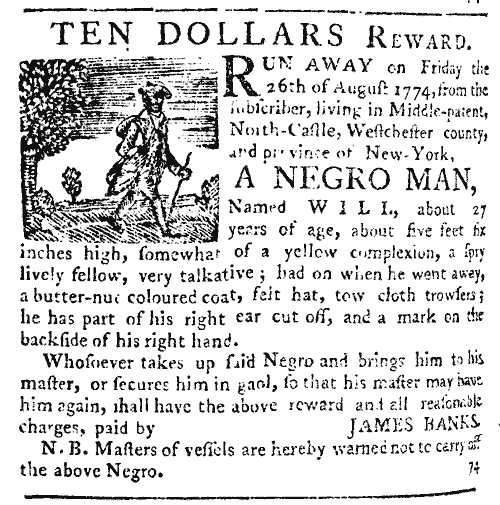
Slavery: That was something bad that happened down South, right? And we gallant Yankees went down there to fight those awful Rebels and make them set their slaves free, didn’t we? Well, not exactly, according to Susan Stessin-Cohn. “Slavery in the North is a neglected topic,” says the New Paltz town historian. “People just don’t talk about it.”
In fact, says Stessin-Cohn, both the Dutch and the English settlers of what was first Nieuw Amsterdam and then became New York were enthusiastic customers of the slave trade. Even the French Huguenots who came to New Paltz fleeing religious persecution typically owned at least one slave per family.
“Ulster County was one of the worst [counties] in the state,” she notes. “There’s only one person so far in this county that I’ve been able to identify as an abolitionist. Even the Quakers didn’t want to let go of their slaves.”
When Stessin-Cohn was working for Historic Huguenot Street about 15 years ago, she and her colleague Ashley Hurlburt-Biagini began to collect and study old newspaper notices seeking the return of runaway slaves in the Hudson Valley. Their intent was to create an online repository of information for researchers, and also to create a school curriculum based on the information. Though the runaways who managed to elude recapture long enough for their names and descriptions to be published were just “the tip of the iceberg,” Stessin-Cohn says, the two researchers eventually compiled some 520 such notices regarding some 607 individuals: “Each time we thought we were finished, we found another ten.”
Clearly, slavery in the Hudson Valley region was not only widespread, but also no less onerous than slavery down South if so many people took the risky initiative to flee their masters. It was a story that both women felt needed urgently to be told. “At first we were going to self-publish, because we thought that this is so important.” But then publisher Steve Hoare at Black Dome Press took an interest in the project, and has been working closely with Stessin-Cohn and Hurlburt-Biagini for the past several years to bring a book to fruition.
The result, titled In Defiance: Runaways from Slavery in New York’s Hudson River Valley, 1735-1831, has just been released and should be available in bookstores this week. Hoare describes the work as “a major book for our region not only as a resource for other researchers and students of the subject, but also for general readers who have an interest in New York State history in general and Hudson Valley history in particular.” Dr. A. J. Williams-Myers, chair of the Department of Black Studies at SUNY-New Paltz, who served as a consultant on the project, wrote the foreword.
Though the newspaper ads listing the runaways were most often quite short and rarely even cited last names for the missing persons, Stessin-Cohn and Hurlburt-Biagini found distinct personalities began to emerge, especially in cases of individuals who fled captivity more than once, as the two pursued their research. “These were skilled, talented, creating, caring people,” Stessin-Cohn says. Many slaves were described as bilingual or trilingual, had mastered a variety of trades, or could play a musical instrument. Some fled with a child or children, or helped another slave to escape at the same time. “Each notice is a story about a person. It’s fascinating to learn about their life.”
The book reproduces the notices one by one and goes on to discuss what more is known so far about each escapee mentioned. For researchers’ purposes, there are also tables that group the slaves by various statistical parameters, but “We wanted the person that was fleeing to be center stage,” Stessin-Cohn avers. She already knows enough about several individuals to make them each the focus of a lecture, and now that the “overview” book has been completed, she and her co-author “have time to investigate” the circumstances of various runaways more deeply. “We’re going to start following some of these people” through other types of historical records, she promises.
There’s a certain irony, Williams-Myers notes in his foreword, in the fact that the reason why many of these individuals have not been entirely forgotten by history is because their own oppressors preserved their memory in print. “Through the runaway notices, owners gave names and voices to the enslaved with their very detailed, descriptive personalizations of their human chattel. That personalization positioned the individual enslaved on the stage of history, not solely as one acted upon, but as an actor on it and in a role crucial to the socioeconomic development of Colonial America into the Federal period,” he writes. One cannot help but think of the metaphysical philosophy of the ancient Egyptians, who believed that the human soul goes on living after death so long as that person’s name or likeness is inscribed somewhere.
You can begin to get to know some of these nearly forgotten people, so determined to find their freedom, by purchasing a copy of In Defiance: Runaways from Slavery in New York’s Hudson River Valley, 1735-1831 at your local bookstore. It is already listed on Amazon, or you can order it directly from Black Dome Press in Delmar at 518-439-6512 or www.blackdomepress.com. The price per copy is $25.95. The authors will be giving their first talk on the book at the Elting Memorial Library in New Paltz on Wednesday, September 28 at 7 p.m., followed by a reception and book-signing.
